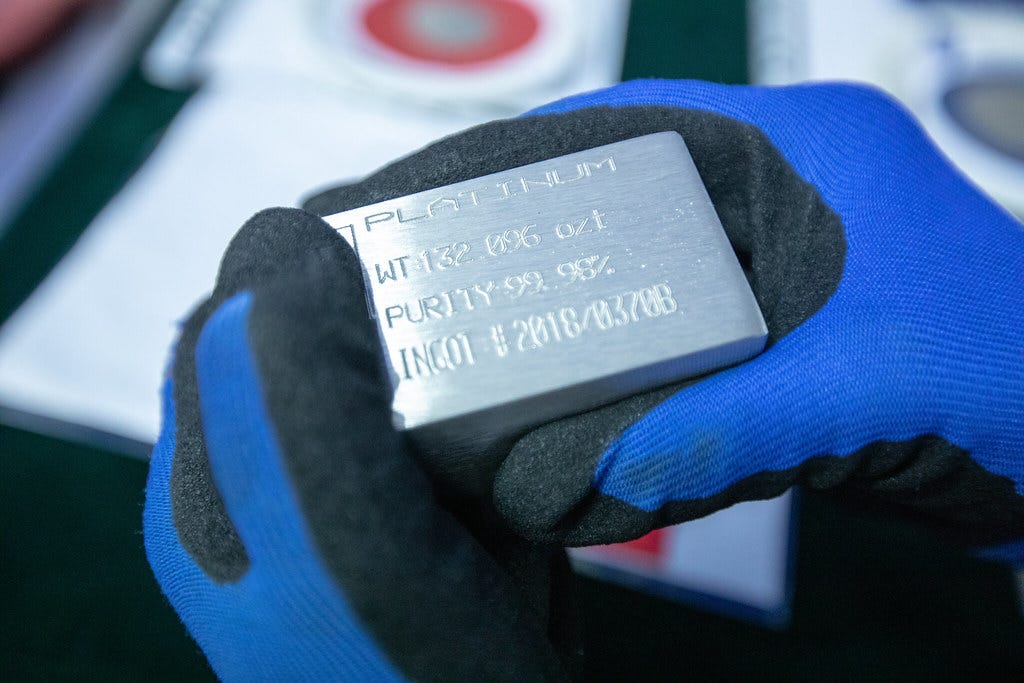‘Time Has Come’ for Platinum and Palladium
What is the outlook for PGMs?
The price of platinum surged two weeks ago and has largely held onto gains.
The 10% jump in the price, to as high as US$1093 an ounce, coincided with London Platinum Week.
Metals Focus noted that platinum’s performance mirrored that of last year’s Platinum Week, but said it was historically unusual.
“Over the past decade, price gains during Platinum Week have averaged a modest 1%,” it said.
“The latest rallies during this period are partially attributable to platinum’s improving fundamentals.
“For two consecutive years, consensus among analysts has placed the market in a physical deficit, with Metals Focus forecasting shortfalls of 498,000 ounces in 2024 and 529,000oz in 2025.”
That deficit is mainly driven by constrained mine supply, with projected production of 5.43 million ounces in 2025 sitting 13% below average annual production from 2010-19.
Deficits are also expected this year across palladium, rhodium, iridium and ruthenium.
Metals Focus suggested platinum could rally to as high as US$1200/oz this year but was likely to average US$970/oz, up 1% on 2024.
Palladium is forecast to average US$930/oz in 2025, down 5% on last year, supported by a narrowing 254,000oz deficit.
Demand drivers
The biggest current drag on platinum group metal demand is the ongoing uncertainty around tariffs.
“While tariffs (especially those aimed at the automotive sector) may dampen sentiment after the optimism of Platinum Week fades, the market remains in a deficit,” Metals Focus said.
Slowing electric vehicle demand is considered a positive for PGM demand.
Last year, EV production rose by just 9%, its weakest full year total since mainstream adoption began.
“Despite the slower pace of electrification, demand for platinum, palladium and rhodium, still tethered to the fate of the internal combustion engine, slipped by 4% in 2024,” Metals Focus director of PGMs Wilma Swarts said.
Johnson Matthey has forecast a 5% fall in automotive PGM demand this year, based on a “business as usual” scenario, but acknowledged the rapidly changing global trade situation made it hard to forecast.
Metals Focus forecasts ruthenium as the only PGM expected to see an increase in demand this year.
‘Time has come’
Investment firm Goehring & Rozencwajg noted that sentiment for PGMs was bleak, describing platinum’s 16-year bear market as a “study in endurance”.
“The time has come, we believe, to turn serious attention—and capital—towards the platinum group metals and their related equities,” they wrote in their March quarter investment update.
“Over the past 18 months, a growing number of supply and demand signals have begun to flash in concert, suggesting that a long-overlooked corner of the commodity world may be on the cusp of making a significant bullish move.”
Goehring & Rozencwajg noted that supply continued to fall and demand was surprisingly resilient.
“In our view, today’s deficit conditions in both platinum and palladium are not only real— they’re likely to persist far longer than the market currently expects,” they said.
“And most importantly, investment demand—a vital swing factor in the platinum market—is beginning to re-emerge.”
The firm said the belief that the rise of EVs would render PGMs obsolete was unravelling.
It added that the fact that nearly 40% of global PGM mine supply was underwater meant the market had likely bottomed.
“Robust demand. Contracting supply. Persistent deficits. And an investment consensus built on a narrative we do not believe will hold. It is, in our view, the textbook setup for a bull market to begin,” Goehring & Rozencwajg said.
“We believe the time to buy PGMs—and the companies that produce them—is now.”


